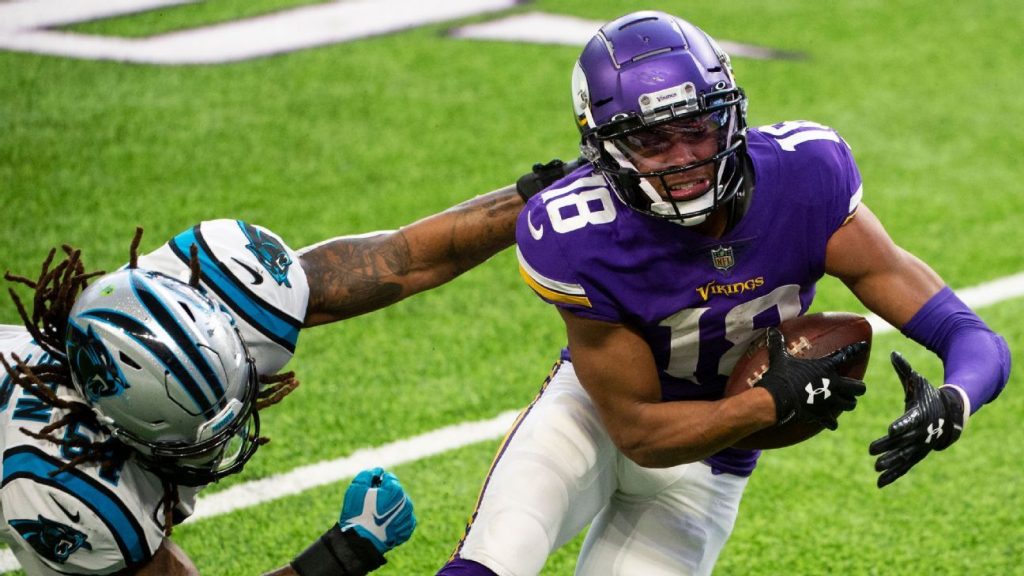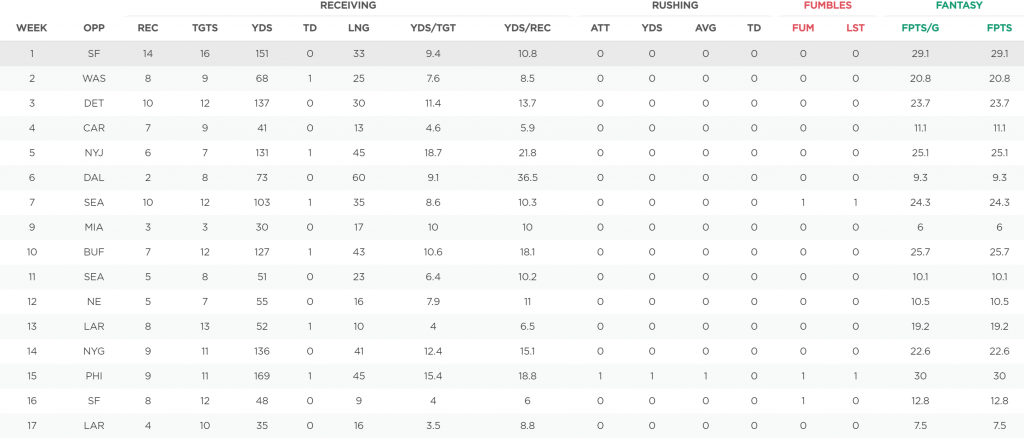The deepest position in all of fantasy football has to be the Wide Receiver (WR) position. The WR position is the trickiest because it relies on the game plan and the quarterback (QB) to make a WR productive. Veteran WRs vs. younger WRs has been a debate in fantasy for the longest time. Should I invest in a younger WR that has not proven themselves yet or an older WR that has proven themselves? This article will analyze which types of receivers you should invest in to solidify the WR position in fantasy continuously.
Depth at the Wide Receiver Position
There is no doubt that WR is the deepest position in all fantasy football. This depth allows streaming WRs every week a viable option in PPR. In turn, WRs are drafted later than running backs (RB) and other positions scarce of fantasy production.
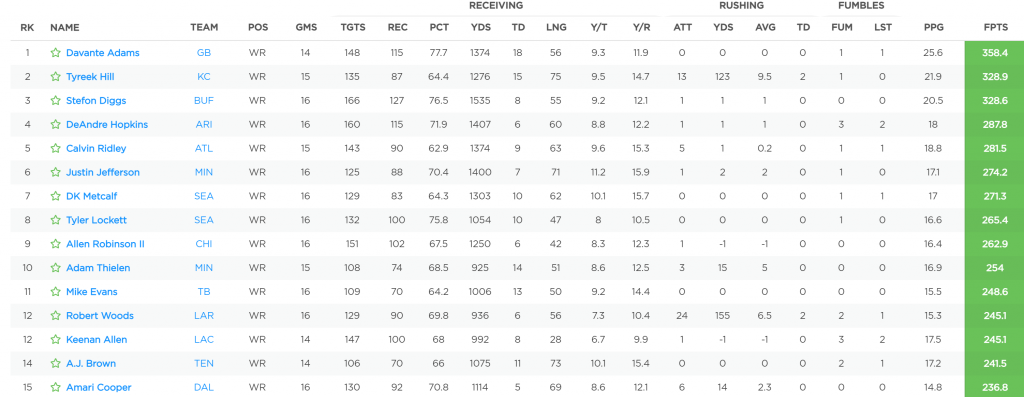
According to fantasydata.com, all top-15 WRs eclipsed the 200-point mark, but only three WRs eclipsed the 300-point mark in PPR scoring format. The difference between the WR1 and the WR15 is over a 100-point difference. Obtaining a top-three WR gives you an overwhelming advantage at the WR position. From WR4-10, all WRs eclipse the 250-point mark, and then the rest eclipse the 200-point mark. All top-15 WRs produced in the WR1 range, but which WRs should you target?
Upside Vs. Consistency
The biggest fear in WRs in fantasy football is the consistency to produce at an elite level every week. Consistency can be daunting when investing in an ascending rookie compared to a lot of the veteran WRs.
DeAndre Hopkins finished as the WR4 in PPR scoring. Based on Hopkins’s track record, we know that he has produced at an elite level. Looking at the 2020 season, Hopkins reminded many fantasy managers why he is an elite option at the WR position. Hopkins received 160 targets and finished with 115 receptions, 1,374 receiving yards, and nine TDs.
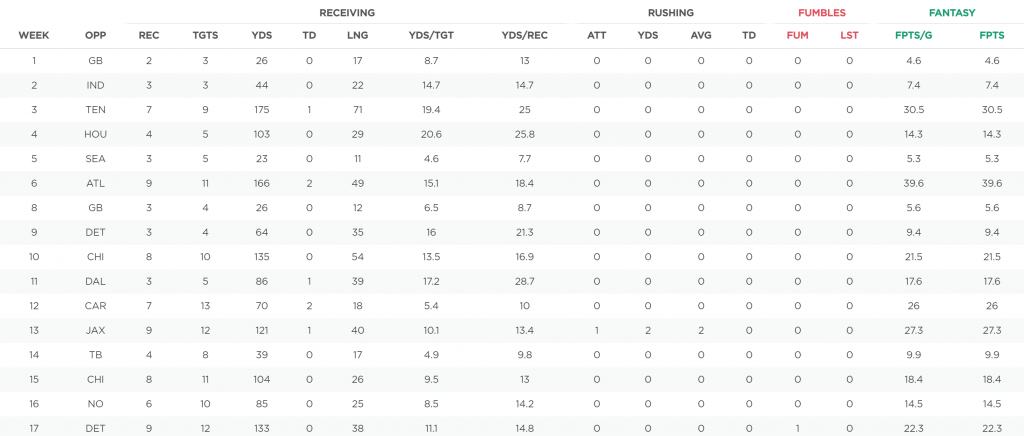
Justin Jefferson finished as the WR6 in PPR scoring. Jefferson came in as a rookie in 2020, after being selected by the Minnesota Vikings. Jefferson received 125 targets and finished with 88 receptions, 1400 yards, and seven TDs.
Comparing both WRs, Hopkins was the better WR in 2020. But does that mean going forward, he is the better option of the two? Hopkins was the WR1 on the Cardinals, and no doubt the 28-year-old will come back as the alpha WR1 next season.
On the other hand, Jefferson has more questions because he only has played one year of NFL football. Can he be better than what he was last year? The short-term benefit of investing in Hopkins will bring you elite WR production. Jefferson’s investment brings you elite WR production with an upside to be the WR1. Jefferson may not be a better option than Hopkins next season, but he may be a drastically better option than Hopkins in the following years. Investing in long-term elite young WRs will close the gap of fantasy points.
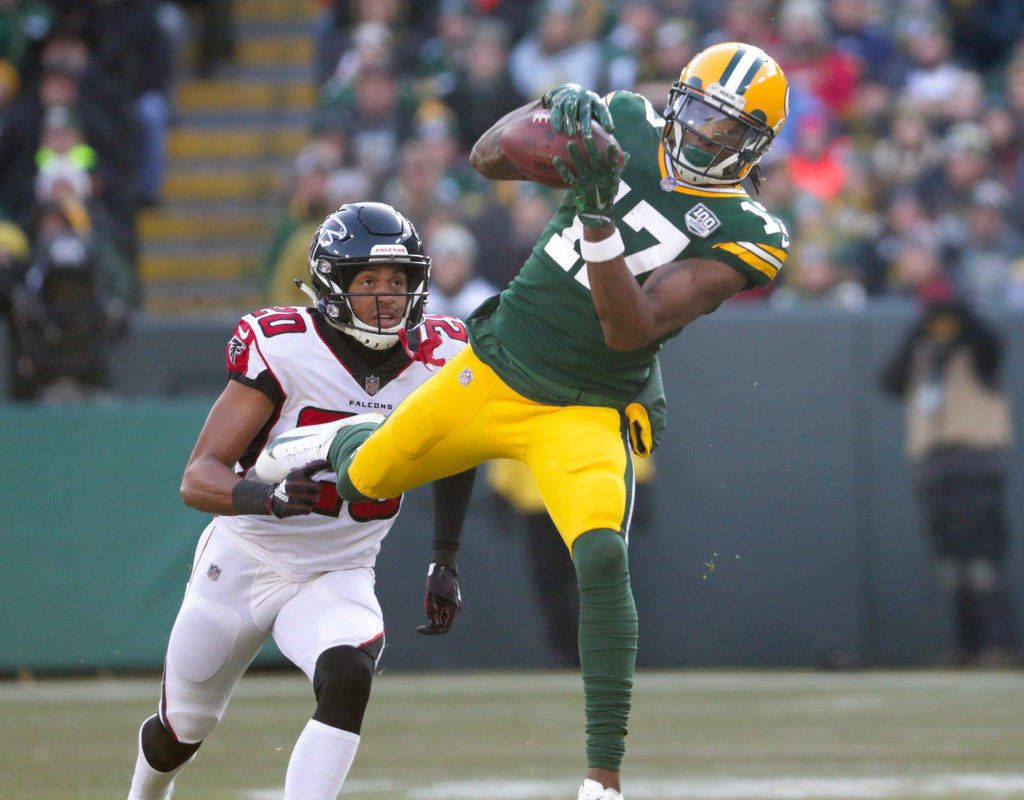
Davante Adams finished as the WR1 in 2020. Jefferson could be the next WR1. After coming off a terrific rookie year, there is little doubt that he will improve and provide even better numbers than he did in 2020. Do not be afraid to take risks and project forward.
Age Vs. Talent
One of the most overthought aspects of evaluating players for many fantasy managers in dynasty fantasy football is the player’s longevity. Many WRs tend to start regressing around the age of 30, and many fantasy managers try to sell before players hit the regression for maximum value return. Age does play a considerable part in dynasty fantasy football because of the downward trajectory of older players’ production. This argument is different for different situations.
These older elite players are critical for contending teams because they bring a ton of production to a team. Players such as Adam Thielen and Julio Jones are starting to approach the regression but still provide a ton of fantasy production to a team. This is great for teams that need elite production for a short period of time, but is it a better option than investing in a younger ascending player?
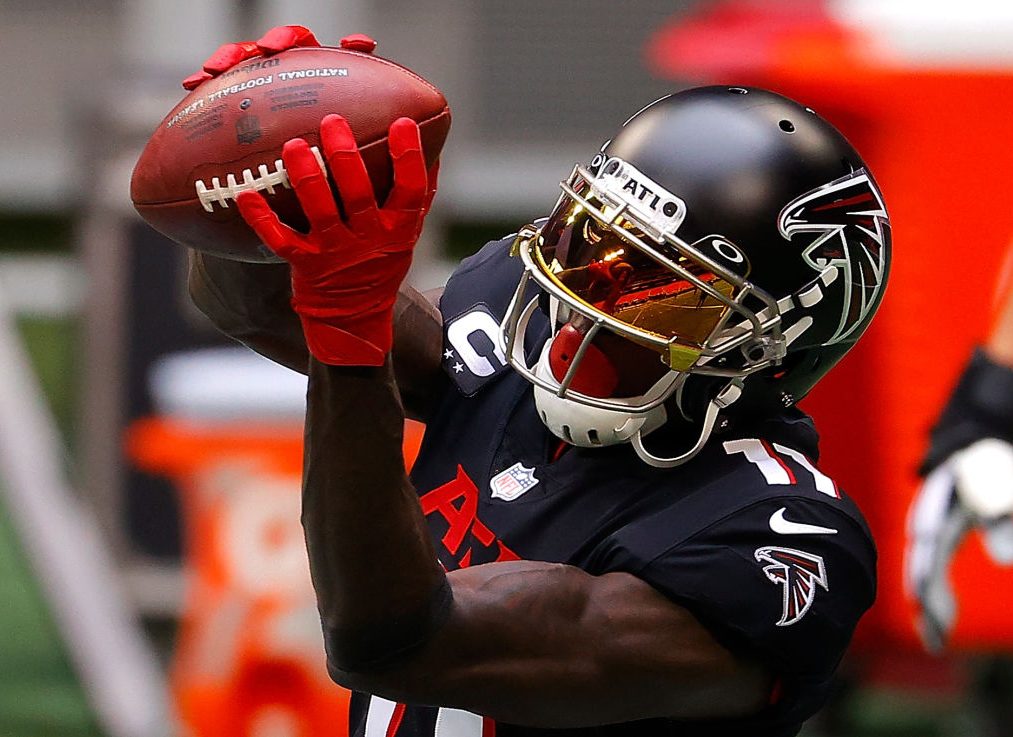
It may be the better option for contending teams because proven production will always outweigh the unknown if teams need to win now. Taking a shot at a rookie WR may pay off for contending teams, but it could also go wrong. This could prove costly for contending teams because the win window is short for many fantasy rosters.
For rebuilding teams, this makes a lot of sense. Trading away elite players for many high draft picks may jumpstart a failing team towards a championship roster. Trading away older pieces for younger pieces will help a team rebuild into a contending team in the future. If you are not going to be contending in the next few years, the older players will not provide value for your team. Trading away elite value players for young ascending players and high draft picks may help you get back into the contending position.
Conclusion
Wide receiver is the deepest position in fantasy football but investing in the right WRs is key to success in fantasy football. In dynasty, we are fast to write off veteran WRs because they are old. Sometimes the unproven statistics of younger WRs make us trust veteran WRs more. Investing in short-term WRs may give you consistent, predicted production for a shorter period. Investing in long-term WRs may give you a higher ceiling with an unpredictable output for a more extended period.
Make sure you subscribe to the #NerdHerd, where you get exclusive content, dynasty/rookie/devy rankings, buy/sell tool, and a bonus podcast too. Dynasty Nerds also recently launched the #DynastyGM tool, which is a complete game-changer in the fantasy industry. Click here for a free trial. We indeed are your one-stop shop for all your fantasy football needs!

